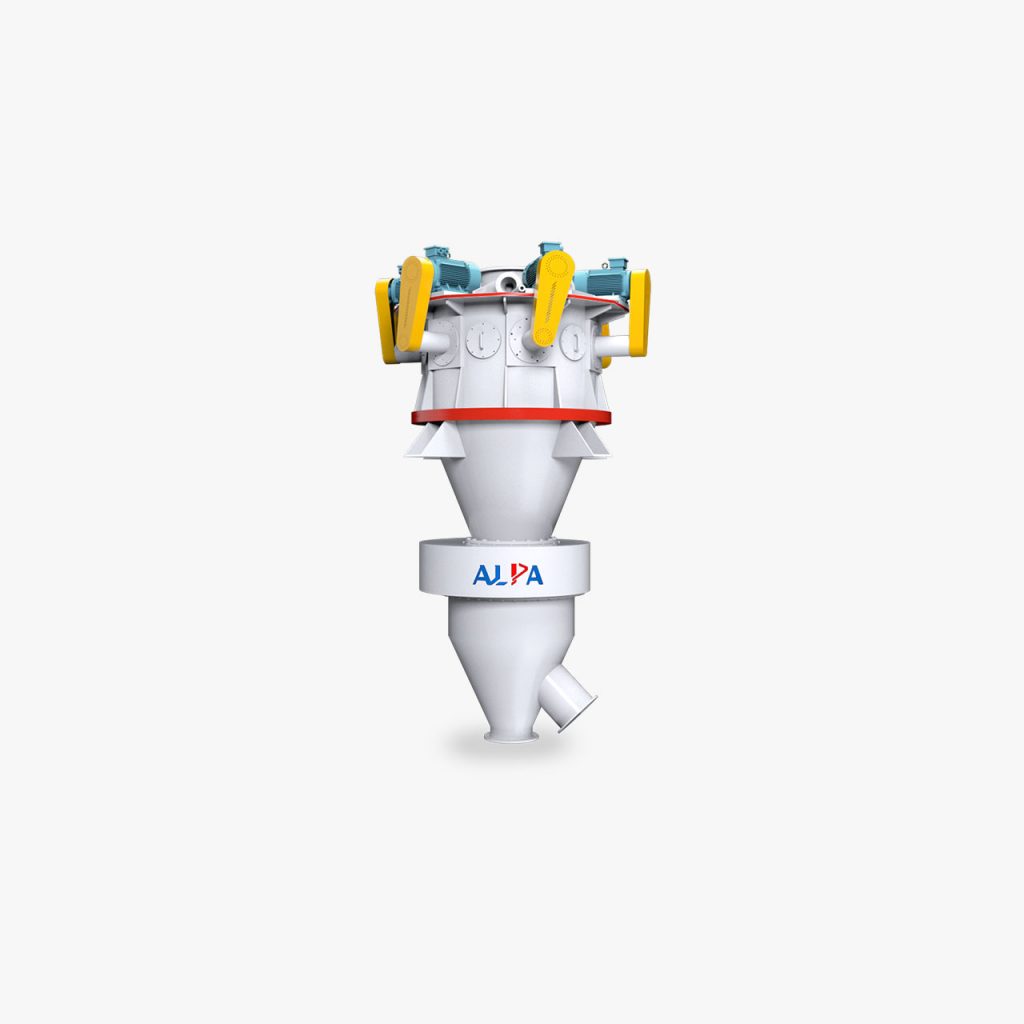About Ultrafine Powder Classification Technology

Ultrafine powder is not only the basis for preparing structural materials, but also a material with special functions. field is required. With the application of ultra-fine powder in modern industry more and more widely, the position of powder classification technology in powder processing becomes more and more important.
1. The meaning of classification
In the pulverization process, only a part of the powder usually meets the particle size requirements. If the products that have reached the requirements are not separated in time, and then pulverized together with the products that do not meet the particle size requirements, it will cause energy waste and over-crushing of some products. .
In addition, after the particles are refined to a certain extent, the phenomenon of crushing and agglomeration will appear, and even the crushing process will deteriorate due to the larger particle agglomeration. For this reason, in the process of ultrafine powder preparation, it is necessary to classify the product. On the one hand, the particle size of the product is controlled to be within the required distribution range; Then crush to improve the crushing efficiency and reduce energy consumption.
With the improvement of the required powder fineness and the increase of output, the difficulty of classification technology is getting higher and higher. The problem of powder classification has become the key to restrict the development of powder technology, and it is one of the most important basic technologies in powder technology. one. Therefore, the research on ultrafine powder classification technology and equipment is very necessary.
2. The principle of classification
Classification in a broad sense is to divide the particles into several different parts by using the different characteristics of particle size, density, color, shape, chemical composition, magnetism, and radioactivity. Classification in a narrow sense is based on the fact that particles of different particle sizes are subjected to centrifugal force, gravity, inertial force, etc. in the medium (usually air and water), resulting in different motion trajectories, so as to realize the classification of particles of different particle sizes.
3. Classification of classifiers
According to the medium used, it can be divided into dry classification (the medium is air) and wet classification (the medium is water or other liquids). The characteristic of dry classification is that air is used as fluid, which is relatively cheap and convenient, but it has two disadvantages. One is that it is easy to cause air pollution, and the other is that the classification accuracy is not high. Wet classification uses liquid as the classification medium, and there are many post-processing problems, that is, the classified powder needs to be dehydrated, dried, dispersed, and waste water treatment, etc., but it has the characteristics of high classification accuracy and no explosive dust.
According to whether it has moving parts, it can be divided into two categories:
(1) Static classifier: There are no moving parts in the classifier, such as gravity classifier, inertia classifier, cyclone separator, spiral airflow classifier and jet classifier, etc. This type of classifier has a simple structure, does not require power, and has low operating costs. The operation and maintenance are more convenient, but the classification accuracy is not high, so it is not suitable for precision classification.
(2) Dynamic classifier: There are moving parts in the classifier, mainly referring to various turbine classifiers. This type of classifier is complex in structure, requires power, and consumes a lot of energy, but it has high classification accuracy and is easy to adjust the particle size of the classifier. As long as the rotation speed of the impeller is adjusted, the cutting particle size of the classifier can be changed, which is suitable for precision classification.
